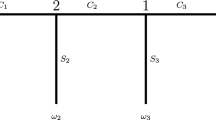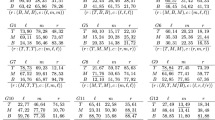Abstract
It is shown that the axioms Cubitt and Sugden (1994; Economic J. 104: 798) impose on a theory of rationally justifiable play (TRJP) do not prevent the possibility that two players necessarily disagree concerning the probability they ascribe to the choice of a third player. This appears to indicate that those axioms are not sufficient for defining a `reasonable' TRJP. In addition, for the case in which a player's beliefs are statistically independent, conditions for a TRJP are suggested under which the existence of a quasi-strict equilibrium is sufficient, but the existence of a consistent n-pair is not, for defining a TRJP meeting those requirements.
Similar content being viewed by others
REFERENCES
Cubitt, R. and Sugden, R. (1994), Rationally justifiable play and the theory of non-cooperative games, Economic Journal 104: 798–803.
Harsanyi, J. (1973), Games with randomly disturbed payoffs: A new rationale for mixed-strategy equilibrium points, International Journal of Game Theory 2: 1–23.
Myerson, R. (1991), Game Theory: Analysis of Conflict. Cambridge, MA: Harvard University Press.
Samuelson, L. (1992), Dominated strategies and common knowledge, Games and Economic Behavior 4: 284–313.
Squires, D. (1998), Impossibility theorems for normal form games, Theory and Decision 44: 67–81.
Author information
Authors and Affiliations
Rights and permissions
About this article
Cite this article
Quesada, A. Another impossibility result for normal form games. Theory and Decision 52, 73–80 (2002). https://doi.org/10.1023/A:1015538123387
Issue Date:
DOI: https://doi.org/10.1023/A:1015538123387




